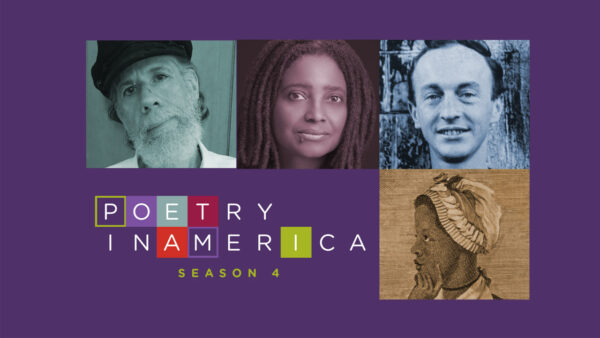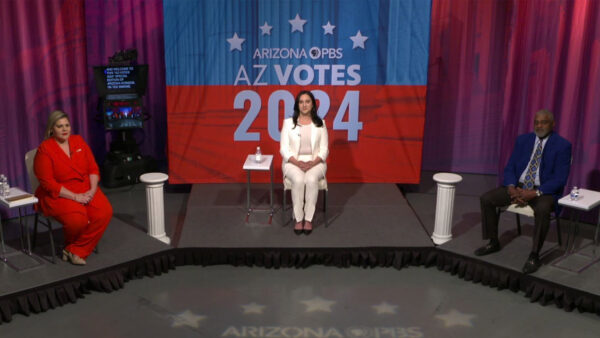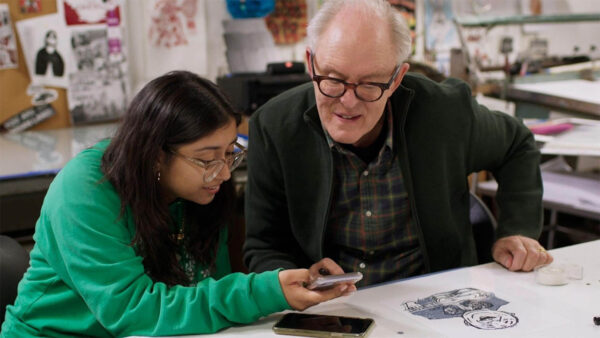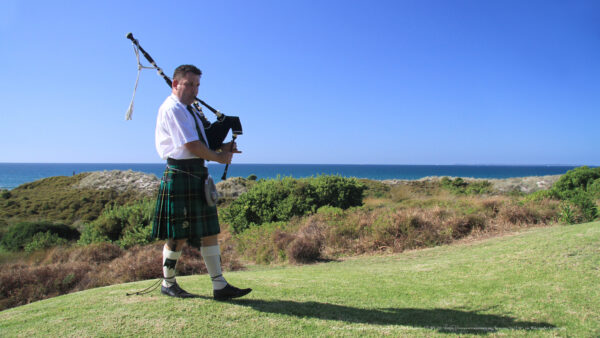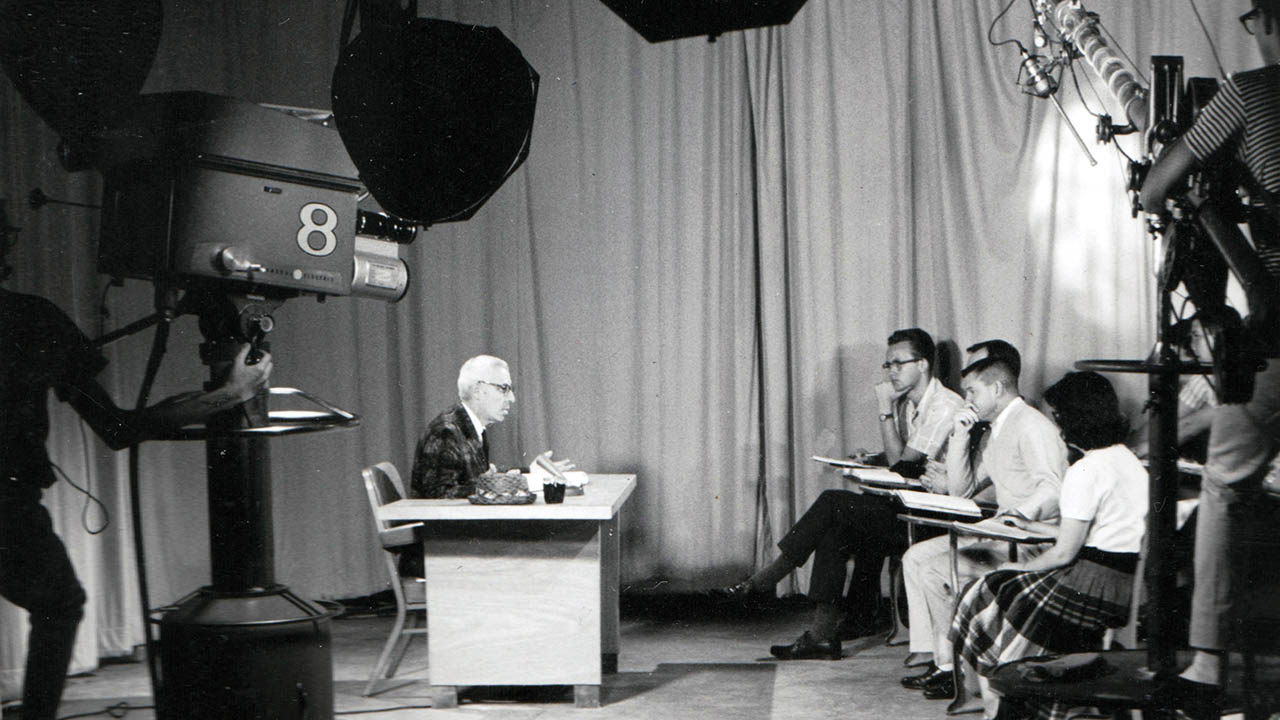
History
May 30, 2022
Arizona PBS began broadcasting from the campus of Arizona State University on Jan. 30, 1961. The station’s very first broadcast day included a community bulletin board, an audio-visual telecourse, two children’s programs, the evening newscast, a film on television and a film on the scientific method.
Today, Arizona PBS is the seventh most-watched public television station in the nation – and the largest owned and operated by a university, reaching nearly 2 million Arizona homes through four broadcast channels and a growing array of digital platforms.
2022
After a four-year hiatus, fan favorite “Check, Please! Arizona” returns to Arizona PBS.
2021
Adrienne Fairwell is named general manager, becoming the station’s first Black general manager. Arizona PBS launches “Playlist 48,” a digital-first show highlighting the local music scene.
2020
Arizona PBS partners with Tucson-based Arizona Public Media to launch At Home Learning, a combination of on-air programming and online resources for students and teachers while schools are closed due to the COVID-19 pandemic. Julia Wallace, a respected leader in broadcast, online and print journalism, is named interim general manager of Arizona PBS.
2019
“Art in the 48,” which tells the stories of art and artists in Arizona, premieres in October. During impeachment proceedings in Washington, D.C., Arizona PBS provides full coverage on its main channel.
2018
“Plate & Pour,” an exploration of Arizona’s food and restaurant scene, premieres in January. Arizona PBS and The Arizona Republic host the U.S. Senate debate between Sen. John McCain and Rep. Ann Kirkpatrick
2017
Arizona PBS launches its fourth channel – Arizona PBS KIDS. Mary Mazur, chief operating officer of KCET public television in Los Angeles, is named the new general manager of Arizona PBS. The station receives the Governors’ Award from the Rocky Mountain Southwest Chapter of the National Academy of Television Arts & Sciences in recognition of the efforts of educational outreach
2016
Cronkite News, the news division of Arizona PBS, broadcasts three hours of live election coverage from Phoenix, Washington, D.C., New York and the U.S.-Mexico border. Arizona PBS and The Arizona Republic host the U.S. Senate debate between Sen. John McCain and Rep. Ann Kirkpatrick, simulcast nationally on C-SPAN. Arizona PBS produces a special on the 100th birthday of Walter Cronkite from the Newseum in Washington.
2015
Cronkite News, the news division of Arizona PBS, begins airing a 30-minute nightly newscast on 8.1, a cornerstone of a new 2½ hour news and public affairs block that features “BBC World News,” “Arizona Horizon” and “PBS NewsHour.” A 30-minute documentary created by Cronkite News airs on every TV station in Arizona and is watched by more than 1 million viewers, the largest live viewership of an Arizona PBS production in history.
2014
The station is renamed Arizona PBS and comes under the leadership of the Walter Cronkite School of Journalism. Dean Christopher Callahan is named chief executive officer. The station wins six Rocky Mountain Emmys. “Arizona Collectibles” premieres in September following a production weekend in April during which thousands of community members bring their antiques to the station.
2012
Cronkite News provides three hours of live election coverage.
2010
Eight shuts down its Tempe campus operations and begins broadcasting from the new state-of-the-art Walter Cronkite School of Journalism and Mass Communication on the ASU Downtown Phoenix Campus. Cronkite News starts airing nightly on Eight World.
2008
The business and administrative offices move to the newly opened Cronkite Building. Ted Simons takes over as new host of “Horizon,” replacing 25-year veteran Michael Grant. Eight wins four regional Emmy awards, three for “Arizona Stories.”
2006
KAET unveils its new identity – Eight.
2004
KAET launches azpbs.org.
2003
“Horizonte,” a public affairs show focusing on Latino issues, debuts with host José Cárdenas. “Horizon” wins nine Associated Press awards.
2002
KAET wins six regional Emmy Awards, three for “Horizon” and three for “Images of Arizona.”
2001
KAET launches digital channels KAET-DT 8.1, 8.2 and 8.3.
1996
The station broadcasts live coverage of the first Arizona Presidential Preference Forum, leading to another Governors’ Award from the Rocky Mountain chapter of the National Academy of Television Arts and Sciences.
1995
“Horizon” receives the Governors’ Award for coverage of the 1994 elections.
1994
KAET gets top PBS honors for its community outreach activities and informational station breaks for children.
1990
The Silver Gavel, the highest honor from American Bar Association, is awarded to KAET for “exceptional programming on the judiciary.” KAET receives the Society of Professional Journalists First Amendment Award and the state chapter’s Freedom of Information Award.
1989
Arizona Supreme Court oral arguments are televised – a national first.
1988
The station wins the Governors’ Award from the Rocky Mountain chapter of the National Academy of Television Arts and Sciences for coverage of Pope John Paul II’s visit. KAET begins historic live, 170-hour, five-and-a-half week coverage of the Arizona Senate sitting as a court of impeachment of Gov. Evan Mecham. Later KAET televises the two-week Mecham trial and selection process to fill a vacancy on the Arizona Supreme Court.
1987
Gov. Evan Mecham’s inauguration is televised by KAET. A translator is added in Williams to serve northernmost Arizona. Pope John Paul’s visit to Phoenix is carried by KAET.
1986
On KAET’s 25th anniversary, stereo and SAP transmissions begin.
1984
A new 270-foot tower and antenna are construction on South Mountain, replacing the old 97-foot tower. The first Walter Cronkite Award luncheon is broadcast on KAET.
1983
Live heart surgery from St. Joseph’s Hospital and Medical Center performed by Dr. Ted Diethrich is seen internationally. KAET receives an International Film and Television Festival of New York award.
1981
KAET reaches Flagstaff with a translator on Mount Elden. Supreme Court nominee Sandra Day O’Connor’s Senate confirmation hearings are televised by KAET. “Horizon,” a public affairs show focusing on Arizona issues, premieres.
1980
KAET adds translators in Prescott.
1973
KAET moves to the newly opened Stauffer Hall from the ASU Engineering Center on the Tempe campus.
1970
PBS is founded. During the ’70s, KAET begins to distribute national programs such as Mr. Rogers’ Neighborhood, Sesame Street, Masterpiece Theatre, Great Performances, Nova and The MacNeil/Lehrer Report.
1968
The station uses color studio cameras for the first time.
1963
KAET receives its first regional Emmy Award.
1961
KAET (Arizona Educational Television) signs on the air Jan. 30, 1961, as the 56th public television station in the U.S., broadcasting from the Tempe campus. Robert H. Ellis is appointed the first general manager.






